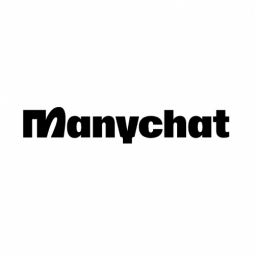下载PDF
Mindvalley's Success with Instagram Automation: A 522% Increase in Masterclass Sign-Ups
技术
- 分析与建模 - 机器人过程自动化 (RPA)
- 网络与连接 - 无线接入网
适用行业
- 教育
- 医疗保健和医院
适用功能
- 产品研发
- 销售与市场营销
用例
- 租赁金融自动化
- 物料搬运自动化
挑战
Mindvalley 营销团队的关键 KPI 之一是推动其大师班的潜在客户获取。当时,他们依靠向上滑动故事和生物链接来推动人们从意识转向大师班。由于团队全力支持创新,他们抓住了测试 ManyChat 的 Instagram 自动化的机会。
关于客户
Mindvalley 是一家教育科技公司,致力于以极低的成本为任何地方的任何人提供相当于常春藤盟校的教育。他们通过分享专注于个人成长、灵性、创业以及整体健康和心理健康的专家和作者的想法和教学,帮助世界各地超过 1700 万学生。
解决方案
Mindvalley 与 School of Bots 的 Natasha Takahashi 合作,使用 ManyChat 的 Flow Builder 创建自动化活动和对话设计。他们使用有机的 Instagram 内容(包括故事、动态帖子和互动测验)来宣传大师班,并鼓励追随者用特定的单词、短语或表情符号私信他们。当关注者与内容互动时,系统会提示他们使用关键字在 Instagram Messages 中向 Mindvalley 发送消息,从而触发 ManyChat 的自动响应。 Mindvalley 还收集了有关该人的目标、挑战和经验水平的人口统计数据,以定制消息副本和优惠。他们使用 ManyChat 的实时聊天功能来提供个性化的客户服务。
运营影响
数量效益
相关案例.

Case Study
Hospital Inventory Management
The hospital supply chain team is responsible for ensuring that the right medical supplies are readily available to clinicians when and where needed, and to do so in the most efficient manner possible. However, many of the systems and processes in use at the cancer center for supply chain management were not best suited to support these goals. Barcoding technology, a commonly used method for inventory management of medical supplies, is labor intensive, time consuming, does not provide real-time visibility into inventory levels and can be prone to error. Consequently, the lack of accurate and real-time visibility into inventory levels across multiple supply rooms in multiple hospital facilities creates additional inefficiency in the system causing over-ordering, hoarding, and wasted supplies. Other sources of waste and cost were also identified as candidates for improvement. Existing systems and processes did not provide adequate security for high-cost inventory within the hospital, which was another driver of cost. A lack of visibility into expiration dates for supplies resulted in supplies being wasted due to past expiry dates. Storage of supplies was also a key consideration given the location of the cancer center’s facilities in a dense urban setting, where space is always at a premium. In order to address the challenges outlined above, the hospital sought a solution that would provide real-time inventory information with high levels of accuracy, reduce the level of manual effort required and enable data driven decision making to ensure that the right supplies were readily available to clinicians in the right location at the right time.

Case Study
Gas Pipeline Monitoring System for Hospitals
This system integrator focuses on providing centralized gas pipeline monitoring systems for hospitals. The service they provide makes it possible for hospitals to reduce both maintenance and labor costs. Since hospitals may not have an existing network suitable for this type of system, GPRS communication provides an easy and ready-to-use solution for remote, distributed monitoring systems System Requirements - GPRS communication - Seamless connection with SCADA software - Simple, front-end control capability - Expandable I/O channels - Combine AI, DI, and DO channels

Case Study
Driving Digital Transformations for Vitro Diagnostic Medical Devices
Diagnostic devices play a vital role in helping to improve healthcare delivery. In fact, an estimated 60 percent of the world’s medical decisions are made with support from in vitrodiagnostics (IVD) solutions, such as those provided by Roche Diagnostics, an industry leader. As the demand for medical diagnostic services grows rapidly in hospitals and clinics across China, so does the market for IVD solutions. In addition, the typically high cost of these diagnostic devices means that comprehensive post-sales services are needed. Wanteed to improve three portions of thr IVD:1. Remotely monitor and manage IVD devices as fixed assets.2. Optimizing device availability with predictive maintenance.3. Recommending the best IVD solution for a customer’s needs.

Case Study
HaemoCloud Global Blood Management System
1) Deliver a connected digital product system to protect and increase the differentiated value of Haemonetics blood and plasma solutions. 2) Improve patient outcomes by increasing the efficiency of blood supply flows. 3) Navigate and satisfy a complex web of global regulatory compliance requirements. 4) Reduce costly and labor-intensive maintenance procedures.

Case Study
Harnessing real-time data to give a holistic picture of patient health
Every day, vast quantities of data are collected about patients as they pass through health service organizations—from operational data such as treatment history and medications to physiological data captured by medical devices. The insights hidden within this treasure trove of data can be used to support more personalized treatments, more accurate diagnosis and more advanced preparative care. But since the information is generated faster than most organizations can consume it, unlocking the power of this big data can be a struggle. This type of predictive approach not only improves patient care—it also helps to reduce costs, because in the healthcare industry, prevention is almost always more cost-effective than treatment. However, collecting, analyzing and presenting these data-streams in a way that clinicians can easily understand can pose a significant technical challenge.






